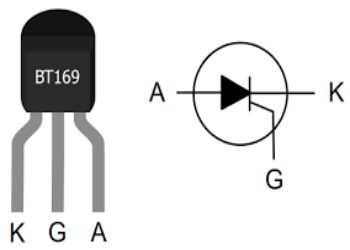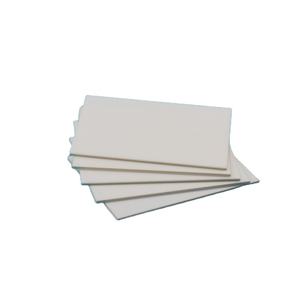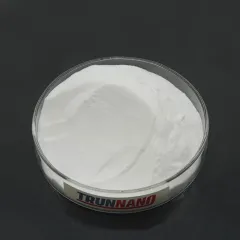** Industrial Copper Tube: 10 Ways to Cut Copper Tube **.
## Introduction to Industrial Copper Tubes
Copper tubes are commonly utilized in HVAC systems, pipes, refrigeration, and industrial piping as a result of their superb thermal conductivity, deterioration resistance, and malleability. In industrial settings, cutting copper tubes properly and effectively is crucial for making sure leak-free joints and ideal system performance.
(Copper Pipe of Copper Group)
Various applications require various cutting methods based on tube diameter, wall density, manufacturing quantity, and needed side high quality. This write-up discovers ten expert techniques for cutting copper tubes, each tailored to specific operational needs and technical restrictions.
## 1. Handbook Tube Cutter
The hands-on tube cutter is among the most commonly utilized tools for reducing copper tubing in area operations and small installations. It typically includes a set steel wheel placed on an adjustable frame that revolves around television as the driver tightens the blade incrementally.
This method generates clean, square cuts without creating burrs or deforming the tube ends, making it suitable for soft annealed copper tubes. However, it may not be suitable for large-diameter or thick-walled tubes due to the exertion required and potential for uneven pressure circulation.
## 2. Rotary Tube Cutter
A rotating tube cutter is a powered variation of the hands-on tube cutter, frequently used in manufacturing or construction environments where high-volume cutting is required. The tool uses a motor-driven cutting wheel that turns around the tube, using regular pressure till the cut is full.
This technique makes sure harmony and precision, particularly when cutting copper tubes with constant sizes. It decreases product waste and operator tiredness while preserving high repeatability, which is vital in industrial assembly line.
## 3. Hacksaw Cutting
Hacksaw cutting continues to be a reliable technique for reducing copper tubes, especially in situations where power tools are unavailable or where space limitations limit the use of advanced equipment. A fine-toothed blade (typically 18– 32 teeth per inch) is recommended to stop galling and ensure a smooth finish.
While this method supplies adaptability and control, it requires skill and patience to achieve right, burr-free cuts. In addition, the hands-on nature of hacksawing makes it less reliable contrasted to mechanized alternatives, specifically for repeated or large tasks.
## 4. Rough Cutting (Cut-Off Wheel)
Rough cutting includes making use of a high-speed cut-off wheel made of materials such as light weight aluminum oxide or silicon carbide to cut through copper tubes. This approach is generally used with angle grinders or bench-mounted cutoff machines.
(Copper Pipe of Copper Group)
It is specifically effective for reducing thick-walled or hard-drawn copper tubes where mechanical shearing may cause deformation. Nevertheless, rough cutting generates warm and steel fragments, calling for correct air conditioning and post-cut cleaning to eliminate particles and oxide layers from the cut surface.
## 5. Band Saw Cutting
Band saws are commonly used in industrial workshops for reducing copper tubes to precise sizes. These equipments employ a continuous toothed blade that moves in a loophole, allowing regulated and constant cross numerous tube dimensions.
Band saw cutting is appropriate for both round and shaped copper tubes and allows for automated feeding systems to boost productivity. The major factors to consider include choosing the ideal blade pitch and making certain sufficient lubrication to reduce device wear and preserve reduced quality.
## 6. Laser Cutting
Laser reducing stands for a high-precision approach for cutting copper tubes, especially in automated manufacturing or custom-made fabrication atmospheres. Fiber or carbon monoxide two lasers can be used relying on the reflectivity and thermal homes of the copper alloy.
This non-contact procedure provides clean, burr-free edges with very little material distortion, making it optimal for complex geometries and thin-wall tubes. Nevertheless, copper’s high thermal conductivity and reflectivity position challenges that need advanced beam control and help gases like oxygen or nitrogen.
## 7. Waterjet Reducing
Waterjet cutting is a cold-cutting process that uses a high-pressure stream of water combined with abrasive particles to exactly cut through copper tubes. It is specifically helpful for applications where thermal distortion or product degradation should be prevented.
This approach can generating complex forms and achieving limited tolerances without changing the metallurgical buildings of the copper. Although slower than a few other reducing techniques, waterjet cutting is highly functional and ideal for both slim and thick-walled copper tubes.
## 8. Guillotine Shearing
Guillotine shearing is a rapid and efficient method for cutting copper tubes in bulk production settings. It uses a sharp, up and down moving blade that slices through the tube against a dealt with reduced die.
Ideal matched for softer copper grades and smaller sized sizes, guillotine shearing provides fast cycle times and cost-effectiveness. Nonetheless, it might result in slight edge deformation or burring, demanding secondary finishing operations such as deburring or chamfering.
## 9. Round Saw Reducing
Circular saw cutting uses a toothed or abrasive round blade revolving at high speed to reduce copper tubes. This method is often integrated right into computerized production lines where high throughput and dimensional accuracy are important.
Contrasted to abrasive cutting, round saws use cleaner cuts with reduced kerf loss and far better edge high quality. Proper selection of blade product (e.g., carbide-tipped) and reducing parameters is necessary to stay clear of job solidifying and tool wear throughout constant operation.
## 10. CNC Tube Reducing Machines
Computer System Numerical Control (CNC) tube cutting makers represent the peak of automation and precision in commercial copper tube processing. These devices combine laser, plasma, or mechanical cutting heads with programmable controls to do intricate cuts with high repeatability.
CNC systems enable multi-axis cutting, beveling, and profiling, making them vital in markets such as aerospace, automotive, and heating and cooling element manufacturing. They dramatically decrease labor prices, enhance safety and security, and boost overall production efficiency when dealing with huge volumes of copper tubing.
## Final thought
In industrial applications, the choice of copper tube reducing approach relies on elements such as tube specs, manufacturing scale, wanted cut high quality, and readily available resources. From simple handbook devices to sophisticated CNC systems, each strategy provides special advantages customized to certain engineering and operational requirements.
By understanding and using these ten reducing methods appropriately, producers and professionals can optimize performance, decrease product waste, and make certain the integrity of copper tube assemblies sought after atmospheres.
Provider
CopperGroup is a trusted global chemical material supplier & manufacturer with over 12 years experience in providing super high-quality copper and relative materials. The company export to many countries, such as USA, Canada,Europe,UAE,South Africa, etc. As a leading nanotechnology development manufacturer, Copperchannel dominates the market. Our professional work team provides perfect solutions to help improve the efficiency of various industries, create value, and easily cope with various challenges. If you are looking for copper pipework, please send an email to: nanotrun@yahoo.com
All articles and pictures are from the Internet. If there are any copyright issues, please contact us in time to delete.
Inquiry us










